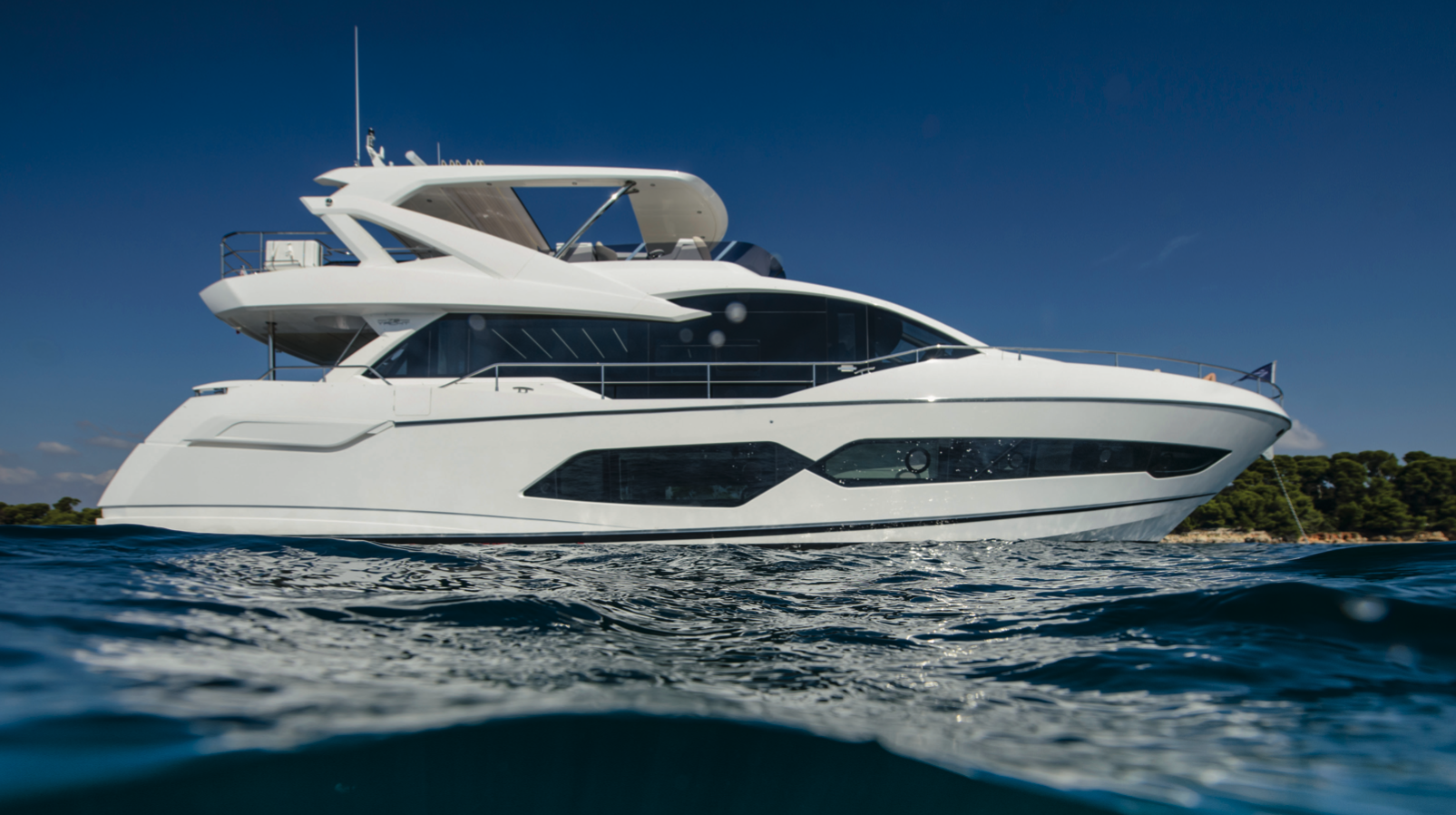
Over the last few years, roll stabilization has become a must-have for boat owners due to the impressive increase in comfort it delivers. The dramatic roll reduction modern systems provide also increases safety onboard and as a result, allows many families to get more use out of their boats.
Key things to consider when choosing a stabilizer
It’s not always so clear what type of stabilization system to choose because the two leading technologies (fins and gyros) have significant functional differences, meaning that no one type suits all boats or all owners’ cruising priorities.
- Choose the right stabilization technology to match the type of boating you do.
- Check the practical limitations of your boat – not all systems will fit all boats, mainly due to space limitations.
- Consider what is best suited to your boat and what is likely to retain the most value when the time comes to sell – some sizes and style of boat lean more towards one technology than another.
Read more: What are marine stabilizers and what do they do? →
Understanding the basics
Stabilization is a complex topic that is often not fully understood, even by boat industry professionals. To ensure you get the correct stabilization technology for your boat usage, the most important thing to understand is that the performance of any system is always limited. It is limited by the actual forces the stabiliser is able to generate in order to ‘fight’ the roll force that a wave applies to the boat.
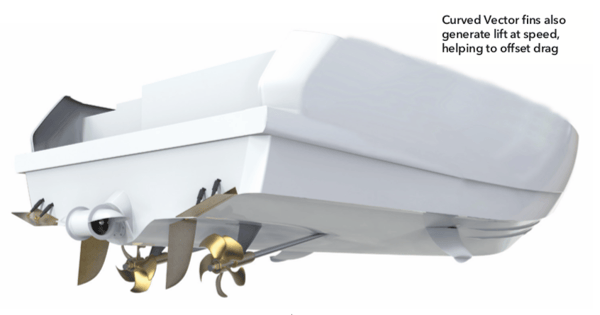
Also, remember that the roll forces depend not just on the wave height but also on the time during which it affects the boat (wavelength). Another big factor is the speed of the boat due to the fundamental law of physics; force = speed2. The number to look for is Newton Meter Second, as this reflects the total force over the whole wave and roll at any speed.
Read more: Vector fins stabilizers versus flat fins stabilizers →
Gyro-type stabilizers are installed inside the boat and get their total roll reduction force from the precession motion that they generate to resist the roll of a boat. This also means they have the same total force regardless of wave period and boat speed; when the precession motion reaches the end of its travel, there is no more force available in that direction.
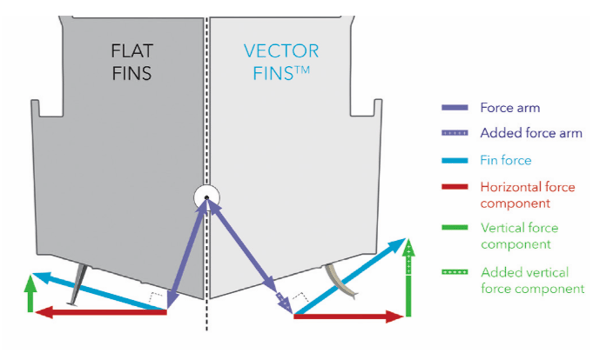
Fin stabilizers act in the water and have two ways of creating roll reduction force, depending on the boat’s speed. At zero speed or ‘at anchor’ mode, the fins rotate rapidly (flap) to generate force and like the gyro, have a definite limit and stops when they reach the end of their travel.
However, when the boat is moving forward, fins also generate roll reduction forces by the angle at which they pass through the water, like adjustable airplane wings or underwater foils. This force increases by speed squared, so the faster the boat moves, the more force they generate. Crucially, they can hold this force for as long as the boat keeps moving forward.
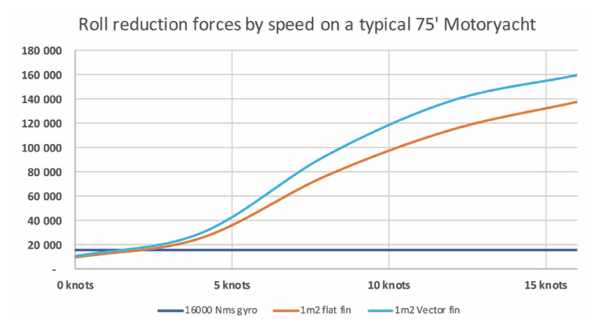
The force generated at different speeds by a gyro, flat fins, and curved Vector fins in a typical 75ft planing Motoryacht is made clear in the graph shown above.
Which system is right for you?
If your only priority is having stabilization at zero speed, with these size choices, the gyro will eliminate more roll than the fins when anchored. However, if you also use your boat on longer cruises and want to have excellent stabilization when cruising in the open sea between sheltered anchorages, fins have a colossal force benefit. They can reduce or eliminate many times the wave height and length of a gyro of this size.
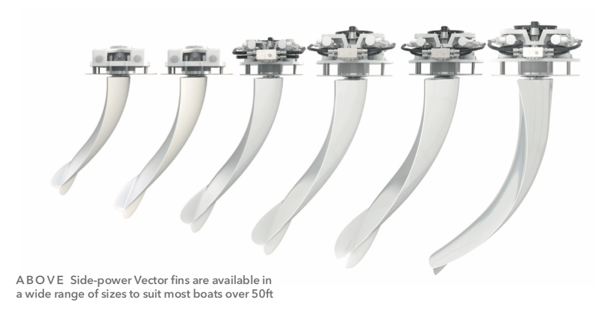
You can, of course, choose a bigger gyro (or multiple smaller ones) to increase the cruising capability, but then size and weight really start to make an impact – to match the fins at eight knots, you need to more than quadruple the size of a gyro. Alternatively, you can choose bigger fins to match the gyro performance at zero speed. Historically, the reason for not doing this was the added resistance from bigger fins causing loss of speed and increased fuel consumption, but this has now changed with the introduction of curved Vector fins.
Because these also create lift underway, they typically reduce the boat’s hull drag by approximately the same amount as the drag the fins create, making it a break-even scenario. In some cases, this even results in a small gain in speed and fuel efficiency.
Summary
There are undoubtedly many other considerations when choosing between the principles of fins or gyro stabilizers, and yet more to weigh up when comparing different brands of the two technologies. Still, it all starts with having enough force available when you need it.
For more in-depth articles about stabilization in general and for detailed information about the performance of Side-power Vector fins, please visit www.side-power.com.








